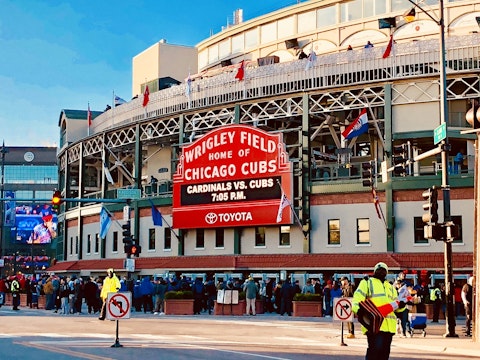In this piece, we will take a look at the 20 fastest-growing cities in the Midwest. For more cities, head on over to 5 Fastest-Growing Cities in the Midwest.
The Midwest is one of four census regions of America. It includes the states east of Montana, Colorado, and Wyoming, states north of Arkansas, Oklahoma, and Kentucky, and states west of Pennsylvania and New York. Simply put, the ‘Midwest’ is the area between the true West of the U.S. and the eastern coastal and inland regions. The area is made up of twelve states, which are Illinois, Indiana, Michigan, Ohio, Wisconsin, Iowa, Kansas, Nebraska, Minnesota, Missouri, North Dakota, and South Dakota.
The region is also quite different from what is typically perceived about the U.S. Globally, America is projected as a financial behemoth with high costs of living and a stressful work environment. However, the Midwest is known for its laid-back lifestyle. As opposed to the iconic skylines of New York City and the glitz and glamor of Los Angeles, the Midwest has vast farmlands and gorgeous plains that are an equally important part of American heritage but are often overlooked in media coverage.
Additionally, if farms aren’t your thing, perhaps the costs of living is. A compilation of costs of living in the U.S. by the Missouri Economic Research and Information Center shows that states in the Midwest are consistently a healthy green. In fact, out of the twelve Midwestern states, only three – Wisconsin, Minnesota, and North Dakota – had a cost of living index approaching the standard value of 100. Additionally, the Midwest is also the only census region without a state with extremely high living costs. To achieve this, the region did compete with the South as a large number of states in both have low living costs, but in the end, the Midwest prevailed because Maryland and D.C. both have extremely high living costs.
Analyzing America as a whole, seven of the top fifteen states with the lowest cost of living are in the Midwest, and the remainder are in the South. However, considering the fact that the South has more states than the Midwest, the fact that the latter still accounts for a large portion of states with the lowest living cost in America provides strong credence to the argument that the Midwest might be the cheapest region in America.
Not only does the Midwest have low costs of living, but it is also crucial to America’s agricultural output. America is the world’s largest corn producer, and 80% of the U.S.’s corn output comes from this region according to the Midwest Row Crop Collaborative. This makes the region important not only to American prosperity but also to the global food supply chain. Considering the fact that the Russian invasion of Ukraine disrupted the global commodities supply chain which contributed to high food costs, it can be argued that stability in the Midwest is also crucial for the global economy.
In dollar terms, estimates from AgAmerica Lending show that Midwest contributes more than $152 billion to America’s agricultural output every year. Within this, the corn belt region of Iowa, Montana, Illinois, Indiana, and Ohio account for the largest share as they contribute $67.2 billion. At the same time, the region is also under threat from climate change, believes the Department of Agriculture. It shares that there are 127 million acres of agricultural land in the region, out of which 75% is used for corn and soybean production. Estimating that the entire agricultural sector was worth $76 billion in 2017, the Agriculture Department believes that all of is at risk from climate change. Therefore, it’s also reasonable to assume that an even higher $152 billion can be at risk from the effects of climate change.
Building on this and moving to the broader Midwestern economy, the region has the third largest metropolitan area in terms of economy i.e. Chicago. The city’s gross domestic product was estimated to sit at $720 billion as of 2023, making it one of the largest in the world. In fact, the only two larger metro economies in America are those of Los Angeles and New York City, and Chicago is also a major financial center in America, home to several important commodities and futures exchanges as well as houses the headquarters of world’s largest fast food chain McDonald’s Corporation (NYSE:MCD). Additionally, as of 2022, Chicago also ranked fourth in the number of Fortune 500 firms based in the city, with 14 companies based there. The Midwest as a whole also has a vibrant startup economy, with estimates showing that 10% of all U.S. funded venture capital startups are based in the region. At the same time, not only does the region have a diverse economy – unlike say Silicon Valley which focuses exclusively on technology – but the region’s cumulative economic output sits at $4.2 trillion.
Finally, America’s largest investment firm, Berkshire Hathaway Inc. (NYSE:BRK-B), is also based in the region. Berkshire’s headquarters are in Nebraska, and its chairman Mr. Warren Buffett traces his roots to Omaha and is often called the ‘Oracle of Omaha’.
With these details in mind, let’s take a look at some of the fastest growing cities in the Midwest.

Pixabay/Public domain
Our Methodology
To compile our list of the fastest growing cities in the Midwest, we first used the Census Bureau’s data to sift out the 35 biggest Midwest cities. Then, the largest metropolitan areas with a number of households greater than 150,000 were picked, and they were ranked according to their inbound move rate – which measures the proportion of people moving in the areas out of the total of moving in and moving out. Out of these, the areas with the fastest inbound move rates are listed below as the 20 fastest growing cities in the Midwest.
Fastest-Growing Cities in the Midwest
20. Milwaukee-Waukesha, Wisconsin
Inbound Move Rate: 47.5%
The Milwaukee-Waukesha area is part of Wisconsin, with its primary city being Milwaukee. Milwaukee is the largest city in its state with more than half a million people living there. It houses several large companies that are operating in the industrial equipment, automotive, and financial services industries.
19. Madison, Wisconsin
Inbound Move Rate: 48%
Madison is the capital city of the Midwestern state of Wisconsin. The Madison metropolitan area, called Greater Madison, houses close to seven hundred thousand people. Since Madison is the capital city of its state, it has a large presence of the government which also provides significant employment in the area. The city nevertheless has a diversified economy, with firms ranging from biotechnology, energy, and financial services.
18. Dayton, Ohio
Inbound Move Rate: 48%
Dayton is one of the largest cities in Ohio and is part of the Greater Dayton metropolitan area which has a population of more than eight hundred thousand people. Dayton city itself is quite small with a population smaller than two hundred thousand people. The city is known as a hub for the aerospace industry in America.
17. Youngstown-Warren-Boardman, Ohio
Inbound Move Rate: 48.1%
The Youngstown-Warren-Boardman is a metropolitan area in Ohio. It is called the Mahoning Valley and a population of more than half a million. The metro area’s primary city is Youngstown, and the region was a hub for the steel industry but the production has declined over the years.
16. Des Moines-West Des Moines, Iowa
Inbound Move Rate: 48.4%
The Des Moines-West Des Moines metropolitan area is in Iowa and is made of six counties. Its principal city is Des Moines which is also the capital and the largest city in its state. The metropolitan area houses roughly nine hundred thousand people and plays an important part in the American insurance industry.
15. St. Louis, Missouri/Illinois
Inbound Move Rate: 48.4%
The St. Louis metropolitan area is located in Missouri and Illinois. It houses most of Missouri’s ten Fortune 500 companies and other notable insurance and healthcare companies.
14. Toledo, Ohio
Inbound Move Rate: 48.6%
Toledo is a city in Ohio with close to three hundred thousand people living in its boundaries. The city is part of the Toledo metropolitan area and it accounts for more than half of the metro area’s population.
13. Columbus, Ohio
Inbound Move Rate: 49%
Columbus is the capital city of Ohio and has a population of almost a million people. It is part of the Columbus metropolitan area which adds another million people to the population.
12. Grand Rapids-Kentwood, Michigan
Inbound Move Rate: 49.2%
The Grand Rapids-Kentwood metro area, also called the Grand Rapids metro, is a metropolitan area in Michigan.
11. Detroit-Warren-Livonia, Michigan
Inbound Move Rate: 49.4%
Detroit-Warren-Livonia is the second largest metropolitan area in the Midwest. Its principal city is Detroit, which is the largest city in Michigan.
10. Chicago-Naperville-Joliet, Chicago
Inbound Move Rate: 49.5%
The Chicago-Naperville-Joliet is the Chicago metropolitan area. Its largest city is Chicago, the largest city in Illinois in terms of population. Chicago-Naperville-Joliet is also the Midwest’s largest metropolitan area.
9. Lansing-East Lansing, Michigan
Inbound Move Rate: 49.7%
Lansing-East Lansing is a metropolitan area in Michigan. It houses a little over half a million people.
8. Indianapolis-Carmel-Anderson, Indiana
Inbound Move Rate: 50.3%
Indianapolis-Carmel-Anderson is in Indiana and its central city is Indianapolis – the capital of its state.
7. Cleveland-Elyria, Ohio
Inbound Move Rate: 50.3%
Cleveland-Elyria, or Greater Cleveland, is in Ohio and one of the largest metro areas in Ohio.
6. Cincinnati, Ohio
Inbound Move Rate: 50.7%
Greater Cincinnati is a tri state metro area in Kentucky, Ohio, and Indiana.
Click to continue reading and see 5 Fastest-Growing Cities in the Midwest.
Suggested Articles:
- 30 Most Polluted Cities in the U.S.
- 25 Cleanest Cities in the U.S.
- 25 Most Diverse Cities in the U.S. to Retire In
Disclosure: None. 20 Fastest-Growing Cities in the Midwest is originally published on Insider Monkey.





